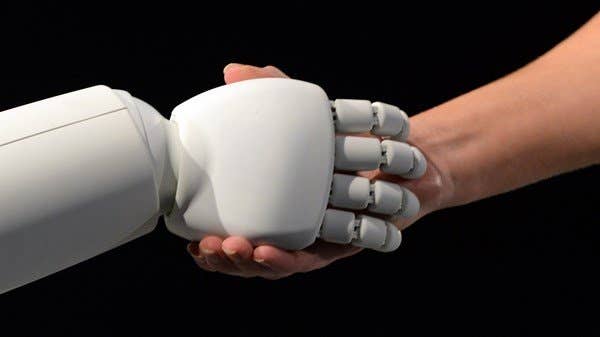New battery development promises the key to providing robots with more energy
Like biological fat reserves store energy in animals, a new rechargeable zinc battery integrates into the structure of a robot to provide

[Aug. 20, 2020: Joshua Shavit]
Like biological fat reserves store energy in animals, a new rechargeable zinc battery integrates into the structure of a robot to provide much more energy, a team led by the University of Michigan has shown.
In general, today's batteries are too big and inefficient, especially for smaller robotic technologies such as drones which need to be as light as possible. However, the team has found a way to make them more viable by placing their batteries on the exterior. The group found their development carried out the double duty of storing charge and protecting the robot’s “organs”.
Applications for mobile robots are exploding, from delivery drones and bike-lane take-out bots to robotic nurses and warehouse robots. On the micro side, researchers are exploring swarm robots that can self-assemble into larger devices. Multifunctional structural batteries can potentially free up space and reduce weight, but until now they could only supplement the main battery.
“Distributed energy storage, which is the biological way, is the way to go for highly efficient biomorphic devices.”
The new battery works by passing hydroxide ions between a zinc electrode and the air side through an electrolyte membrane. That membrane is partly a network of aramid nanofibers -- the carbon-based fibers found in Kevlar vests -- and a new water-based polymer gel. The gel helps shuttle the hydroxide ions between the electrodes.
Made with cheap, abundant and largely nontoxic materials, the battery is more environmentally friendly than those currently in use. The gel and aramid nanofibers will not catch fire if the battery is damaged, unlike the flammable electrolyte in lithium ion batteries. The aramid nanofibers could be upcycled from retired body armor.
To demonstrate their batteries, the researchers experimented with regular-sized and miniaturized toy robots in the shape of a worm and a scorpion. The team replaced their original batteries with zinc-air cells. They wired the cells into the motors and wrapped them around the outsides of the creepy crawlers.
They estimate that their research could generate 72 times more power capacity if their exteriors were replaced with zinc batteries, instead of using a single lithium ion battery.
It is also made with cheap and largely non-toxic materials, meaning the battery is more environmentally friendly than those currently used.
“Robot designs are restricted by the need for batteries that often occupy 20% or more of the available space inside a robot, or account for a similar proportion of the robot’s weight,” said Nicholas Kotov, professor of engineering at the University of Michigan, who led the research, published in the Science Robotics journal.
Like these kind of stories? Get The Brighter Side of News' newsletter.
Want to learn more?
A paper on this research is to be published in Science Robotics, titled, “Biomorphic structural batteries for robotics.”
This research is funded by the Department of Defense, the National Science Foundation and the Air Force Office of Scientific Research. Battery testing took place at the U-M Energy Institute. Kotov is also a professor of chemical engineering, materials science and engineering and macromolecular science and engineering. Wang is a postdoctoral researcher at Harbin Institute of Technology in China.
The University of Michigan has applied for patent protection and is seeking commercial partners to bring the technology to market.
Joseph Shavit
Head Science News Writer | Communicating Innovation & Discovery
Based in Los Angeles, Joseph Shavit is an accomplished science journalist, head science news writer and co-founder at The Brighter Side of News, where he translates cutting-edge discoveries into compelling stories for a broad audience. With a strong background spanning science, business, product management, media leadership, and entrepreneurship, Joseph brings a unique perspective to science communication. His expertise allows him to uncover the intersection of technological advancements and market potential, shedding light on how groundbreaking research evolves into transformative products and industries.
